Introduction


Once Malabar Hill was a forested area with varieties of flora and fauna. According to the Maharashtra State Gazetteer Volume 1,Greater Bombay District. There was thick jungle on the slopes of the Malabar Hill and the reran a pathway known as Shidi from Malabar Hill to Gamdevi through groves and Babul plantations.It is further mentioned, after ascending Walkeshwar road one notied half way up, a winding lower road leading to the Government house which together with the upper road was lined with well-tended trees, shrubs and creepers.This road was first constructed by Lord Elphinstone 1853-1860. But due to urbanisation, the forest at Malabar hill almost disappeared except the areas like Lok Bhavan which are out of reach due to restricted entry & Tower of Silence near Kamla Nehru Park, which is open only for a particular community.The Lok Bhavan area still has remnants of old forest. The details of flora and fauna seen in the Lok Bhavan area are given in the following order:
Plants

During this study it was observed that at present Thespesia populnea Soland, an introduced tree was the dominant tree in he entire area. It could be possible that to cover the barren patches, this fast growing species was planted as it does not require much after plantation and therefore, it could have spread all over the area within no time. Natural regeneration of Thespesia is supposed to be very poor. Thespesia populnea and Pongamia pinnata are very good associates of mangroves and therefore they are fairly common on the beach.

Trees such as Bombax ceiba (Red Silk Cotlon), Sterculia urens (Ghost tree), S. villosa, Erythrina Variegata (Indian Coral tree), Lannea coromandelica (Shemat), Borassus flabellifer (Toddy Palm), Ficus racemosa (Fig), Zizyphus mauritiana (Ber), Pterospermum acerifolium, Tectona grandis (Teak) were some of the species rare In the area; whereas trees like Trema orientalis (Charcoal tree), Morinda bracteata (Bartondi), Adenanthera pavonia (Indian Coral Wood), Ficus bengalensis (Banyan), Ficus religiosa (Peepal), Ochna obtusata, Manilkara hexandra (Rayan), Putranjiva roxburghil terminalia bellirica (Beheda), T. catappa (Desi badam), Cordia dichotoma (Gunda, Bhokar), Ixora brachiala and Tamarindus indica (Tamarind, Chinch, Imli) were present in large number.

Salvadora persica (Pilu) and Avicennia marina were found on the beach. A patch of Opuntia elator was also found a little distance away from the seashore.
Delonix ragia (Gulmohur), Peltophorum pterocarpum (Copper Pod tree), Samanea saman (Rain tree), and Adenanthera pavonia (Indian coral wood tree) were common along the tar road from lower gate to upper gate. The tar road along the beach had Thespesia populnea and Terminalia catappa as dominant species.
Climbers such as Cocculus hirsutus and Antigonon leptopus were usually seen covering the ground as well as canopy or the trees and shrubs.
108 flowering plants representing 48 families and 5 non-flowering plants were recorded. Out of the 108 species 56 were trees among which 23 species were exotics.
Butterflies



 The Lok bhavan estate supports a variety of insect fauna. Two globular nests of cremastogaster ants were seen. A nest of Oecophylla ants was also found in the study area. These ants build nests by sticking leaves of plants with the help of saliva. The sandy shore is also utilised for making nest by a wasp belonging to the family Sphegidae. The wasp identified as Bembex sulphurescens makes a burrow in the soil which is kept open. The wasp feeds its young on flies. Several wasps were seen on the sandy shore. The Lokbhavan estate supports a variety of insect fauna. The area is rich in butterflies. 35 species of butterflies belonging to 6 families were recorded.
The Lok bhavan estate supports a variety of insect fauna. Two globular nests of cremastogaster ants were seen. A nest of Oecophylla ants was also found in the study area. These ants build nests by sticking leaves of plants with the help of saliva. The sandy shore is also utilised for making nest by a wasp belonging to the family Sphegidae. The wasp identified as Bembex sulphurescens makes a burrow in the soil which is kept open. The wasp feeds its young on flies. Several wasps were seen on the sandy shore. The Lokbhavan estate supports a variety of insect fauna. The area is rich in butterflies. 35 species of butterflies belonging to 6 families were recorded.
Marine Shells
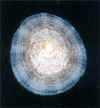
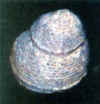


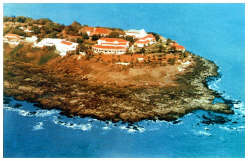
The Lok Bhavan Complex in Mumbai is surrounded by the sea on three sides.
The coasts on western and southern sides comprises of rocky shores, whereas the eastern coast represents a narrow belt of sandy shore, frequently interrupted by patches Rocks. The collection of live and dead shell specimens from various shores represent various species.
Amphibians & Reptiles

The species richness of amphibians anti reptiIes in the Lok Bhavan complex is small. In the present survey 1 toad, 4 lizard and 3 snake species were recorded.
Adults of the common toad, Bufo melanostictus were not observed, but the tadpoles were seen in the garden pool. A number of fresh water fishes were also seen in the pool.
Among the lizards he common garden lizard, Calotes versicolor was very common. They were observed mainly on the trunk of the Thespesia populnea and also on Deloniz regia, Erythrina variegata, Tamarindus indica, Ficus sp and Morinda bracteata. The bark gecko (Hemidactylus Ieschenaulti) was observed on the tree trunk rarely. The skink Mabuya carinata was common amidst the dry leaf litter.
The occurrence of snakes was confirmed by the security guards and servants working in the Lok Bhavan, as snakes were not observed during the survey. The common cobra. Naja naja was said to be seen with the rocky region near the Temple and the Rock python, Python molurus was reported to be on the rocky shore. The slough of the species Amphiesma stolata was found in the crevices of a rock at the road side. Sea turtles were not observed on the sandy shore during the survey.
Birds



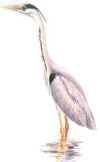
Thirty six (36) species and subspecies of birds were observed during the period.
Except the spotted owlet, which was only heard all the birds were observed with the help of binoculars.
There is an abundance of Roseringed Parakeets. Peafowls were counted during the Survey.
A total of 11 birds were present which includes 1 male and 8 females in a flock, and 2 males seen at a distance, away from the flock.
Mammals



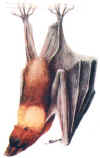 There are no large mammals in the Lok Bhavan area except for the occasional sightings of the dolphins off the south-east coast.
There are no large mammals in the Lok Bhavan area except for the occasional sightings of the dolphins off the south-east coast.
The observations on the sightings of small mammals were also very occasional.
No diurnal roosts of bats were located in the premises. However. the mist-netting operations were carried out to record various species of flying bats during the night.
The traps were also set to check the species diversity of the rodents



